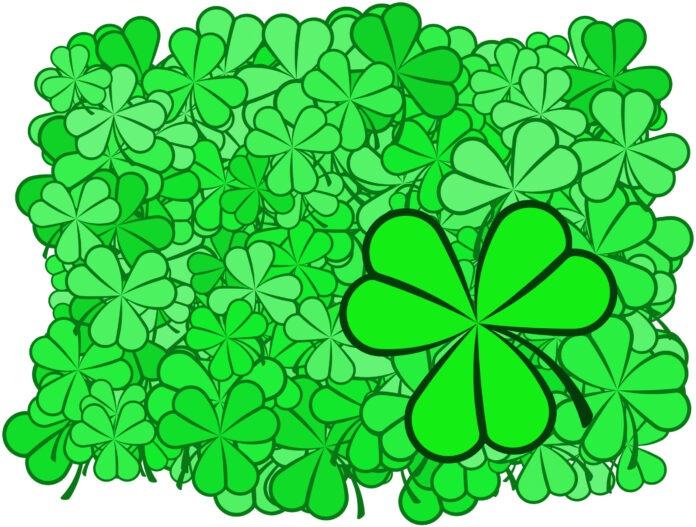During the month of St. Pattie’s Day and the first days of spring, it seems that most people are ready to have a little more green in their lives. Green is associated with new life, growth, healing – and everything healthy. In the States, the color green is also associated with money; and most of us could use a little more of that! But it’s probably not really the money we want. We want what that money might afford us – what could be defined as true wealth. True wealth is about having the ability to live exactly as one pleases. And while financial abundance is often helpful, we cannot have true wealth without our health!
The definition of health is 100% physical, mental, and social well-being, not merely the absence of disease and infirmity. Our health is continually challenged by the world we live in, but this isn’t an insurmountable problem. Our bodies are designed to recover from almost any challenge by using our innate healing powers and the gifts nature provides.
Many people believe they must look to exotic and faraway places to find healing substances, but many of the most healing substances may be discovered right in their own backyards. One of these substances is chlorophyll, the lifeblood of plants. This substance changes sunlight into food energy in plants. Remember learning about photosynthesis back in science class?
Eating a variety of fresh organic green foods is one way to obtain many of the healthful properties of chlorophyll under normal circumstances. But for the more potent healing effect, you’ll need to ingest a more highly concentrated form of chlorophyll. In this case, concentrated chlorophyll supplements may be used as long as they’re in the natural oil-based form, not water-based. Water-based chlorophyll retains the deodorizing properties of chlorophyll but not the healing properties.
Why would anyone produce water-based chlorophyll when it doesn’t have the same effect? One reason is that much of the original research on the antibacterial and healing properties of the superior oil-based chlorophyll was forgotten about post-WWII due to the interest in sulfur-based drugs as antibacterial agents for use in wound healing. Another reason has to do with that other green stuff (money) because it’s far less expensive to produce water-based chlorophyll than oil-based chlorophyll.
Although oil-based chlorophyll stains, this small inconvenience is offset by its effectiveness. Effective oil-based chlorophyll stains because it is oil-based, which is also what contributes to its healing properties. Oil-based chlorophyll is deeply absorbed into the skin because the skin is also fat/oil-based.
To know whether chlorophyll is oil-based or water-based, look at its color. Water-based chlorophyll is bluish because its central atom is copper. Oil-based chlorophyll is green because its central atom is magnesium. Interestingly, the difference between chlorophyll and our red blood cells is that the central atom in our red blood cells is iron, which is what makes our blood red.
When we experience any physical trauma, such as a burn, abrasion, puncture, or tooth extraction, we experience pain because our nerve endings become infuriated by the production of a chemical called guanidine. The most highly alkaline chemical ever produced by our body, guanidine, is toxic to our nerves. By neutralizing this toxic chemical, chlorophyll relieves pain.
The list of the benefits of chlorophyll is almost endless. Chlorophyll stimulates the production of red blood cells, helps build and purify the blood, promotes the elimination of cholesterol, improves capillary integrity, supports the liver, and increases the fibrin synthesis and the prothrombin factor, which favorably influences blood clotting. It is used to promote bowel regularity, detoxify, and deodorize. Counteracting toxins in the body, it inhibits the cancer-causing effects of radiation, dietary and environmental carcinogens, and free radical pathology. It maintains bone density-vitamin K and dissolves calcium oxalate which can cause joint arthritis. Chlorophyll is a precursor for sex hormones, a bacteriostatic, anti-inflammatory, and anti-scarring.
My nutritional tool kit includes chlorophyll to support the treatment of anemia, blood dyscrasias, wounds, internal bleeding, menorrhagia, ulcers, colitis, hemorrhaging, toxemias, purpura, acne, dry skin, hypercholesterolemia, halitosis, body odor, osteoporosis, rectal lesions, kidney dysfunction, burns, scars, and extremely chapped lips. Chlorophyll is beneficial for pre and post-surgery, as well as before and after strenuous workouts. However, caution must be given to anyone who takes blood-thinning prescription drugs such as heparin or warfarin since chlorophyll may interfere with the blood-thinning effects similar to ingesting anything green.
The oil-based chlorophyll in my office is available as a soft gel and as an ointment. When used for pain, the soft gels are chewed, and the liquid inside is held under the tongue for a few minutes before swallowing with water. The ointment is indispensable as part of every emergency First Aid kit. If you’re new to using chlorophyll, be sure to consult a healthcare professional for the best results, and if you’d like to learn more about this amazing natural substance, join me on March 27th at Livonia Civic Center Library.
Chlorophyll is a great example of how our beautiful green planet contains everything we need to keep us healthy. By incorporating the best of what nature has to offer, we contribute to our own health as well as the health of our planet. Have a happy and healthy spring that’s more than just a little green!
Dr. William H. Karl, D.C.











